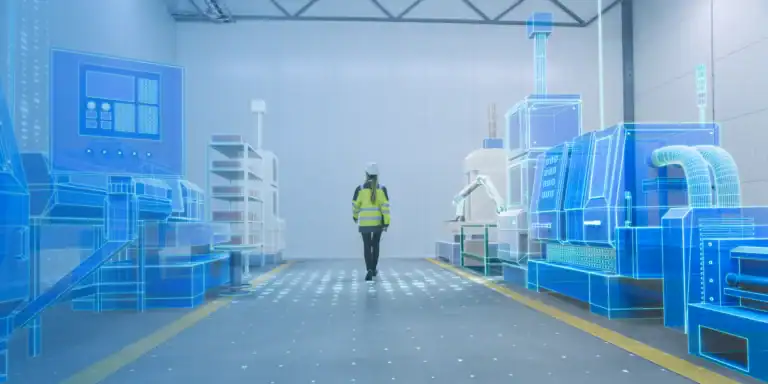The term ‘smart city’ often conjures up visions of sci-fi landscapes full of futuristic technology that seem far removed from our current reality. But in fact, smart cities are a lot closer than you might think. The building blocks are already being put in place around the world through smart community initiatives that use real technologies that exist today.
But what exactly is a smart community? What are the benefits to building them and what are some of the challenges standing in the way? BAI recently conducted research to learn more about what enterprises and venues in the United States and the United Kingdom think about smart communities. In this blog, we explore some of the key findings from that research.
What are smart communities?
One of the most striking results from our survey was the many ways people think of smart communities. When we asked what words came to mind, respondents’ answers ranged from ‘regulated’ and ‘consistent’ to ‘innovative’ and ‘passionate’.
At BAI, when we talk about smart communities, we’re referring to digital infrastructure created by groups of organisations to achieve specific outcomes. Using state-of-the-art technology and real-time data analytics, they deliver outcomes that include personalised and intuitive services and experiences. Those outcomes were also reflected in the survey results, with responses like ‘good customer experience’, ‘good functionality and features’ and ‘security’ coming up over and over to describe smart communities.
What gives these smart communities such massive potential is that they can vary widely in scope and size. A city-wide smart lighting grid can be a smart community, but so can a single venue (such as a smart stadium) or a hospital campus. What they have in common is that they provide a range of stakeholders, including mobile network operators (MNOs), venue operators, governments and others, with access to the advanced digital infrastructure they need to deliver personalised services to their customers or residents.
‘Smart communities’ are digital infrastructures
created by groups of organisations
to achieve specific outcomes.
Smart communities bring a range of benefits
Something else I found fascinating was that, just as respondents had a lot of different thoughts about smart communities, they also had different thoughts on the benefits they would gain by being part of them. The most cited benefit was that smarter communities will make their cities or areas more attractive to other businesses. But despite its top ranking, this benefit was cited by only 73% of respondents, which I found quite surprising, as it suggests more than a quarter of respondents don’t see how connectivity enhances business opportunities.
Some other key benefits seem to be even less well-understood. Just under 40% of respondents cited exclusive access to potentially profitable data as a benefit, which we thought would rank higher given the currency of data in today’s world. Even fewer thought contributing to smarter communities could help them attract talent and investors. That really shocked me, given how drastically the pandemic changed people’s expectations for how and where they work. Being part of a smart community that can offer advanced connectivity can help businesses support a better overall remote or hybrid work experience. That should give them a big boost when it comes to talent attraction and retention.
We suspect we’ll see these numbers grow in the next few years as smart communities and smart cities start to really take off. But in the meantime, I’m also interested in how enterprises and businesses are approaching network management. They might understand how critical connectivity is to building smart communities, but many are delaying their own network upgrades and planning to skip at least two network generations when they do upgrade. Why is that?
It’s not lack of familiarity holding them back. Survey respondents were clear on the technologies needed to advance smart communities, such as 5G, small cells and distributed antenna systems (DAS). Many even consider themselves innovators and early adopters. That suggests to me that either they don’t think those intermediate generations will meet their needs, or funding challenges have led to underinvestment so the only logical option now is to skip multiple generations at a time.
That’s seen in the survey results as well, with 86% reporting funding as one of the biggest challenges to contributing to smart community initiatives.
The right partnership is the key to success
While partnerships can help solve funding challenges, they can also bring their own difficulties. Trust and open communication are critical for governments, businesses and MNOs to work together toward a shared desired outcome. Without them, there’s a very real risk of investing in solutions that don’t meet everyone’s needs or aren’t focused on solving the right problems.
Trust and open communication are critical
for partners to work together toward
a shared desired outcome.
That’s what makes a neutral host like BAI an incredibly valuable partner to include at the smart community table. We serve as a bridge between stakeholders and provide the kind of long-term commitment and stability projects like this take to come to fruition. And because we’re neutral, we’re not locked into a single vendor or trying to sell any one technology or solution. Instead, achieving the shared outcome is always our top priority. That gives us the flexibility to create a truly custom solution for every need that builds on existing assets with the very best technology options for each unique situation. That’s how we transformed the London Underground into a world-leading mobile connected system, and how we’re helping the City of Sunderland achieve its ambition of becoming the UK’s most advanced smart city. With each of these building blocks, the smart city reality gets a little closer.






